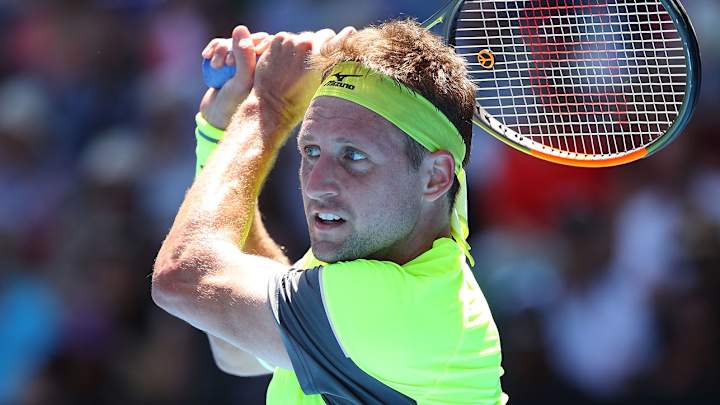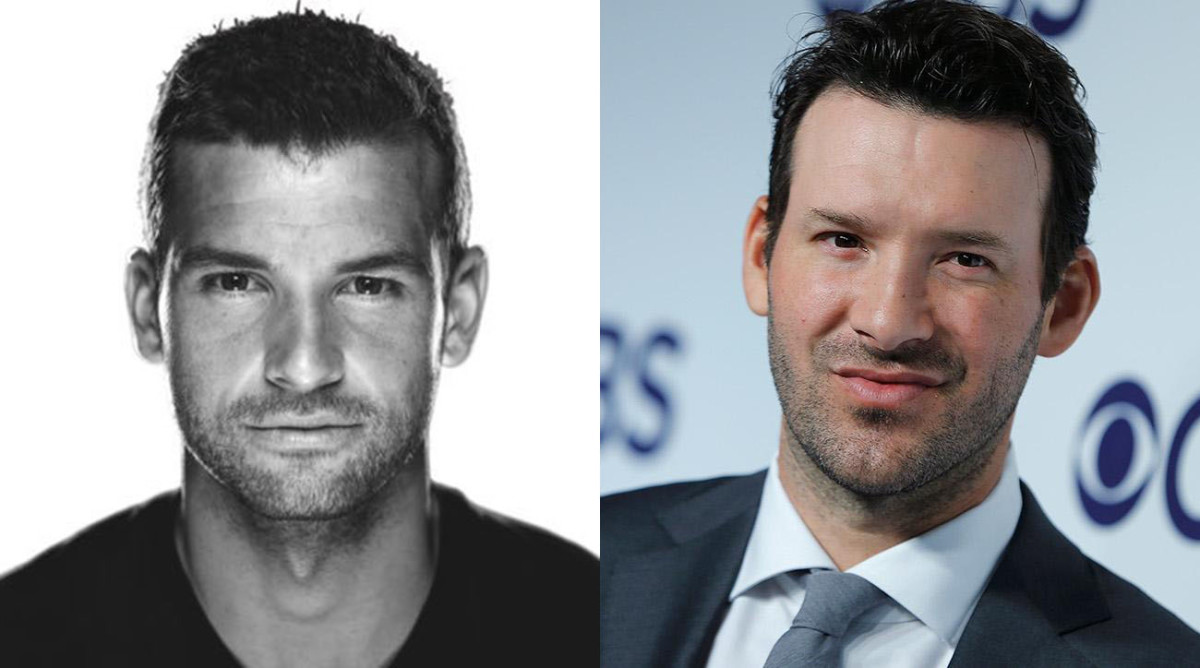Mailbag: Tennys Sandgren Faces Aftermath of Social Media Scrutiny, Australian Open Run

MELBOURNE – A quick Day 10 Mailbag after the quarterfinals round.
Thoughts on Tennys Sandgren and his press conference comments that aspects of the alt-right are “interesting”? Apparently his Twitter feed is rife with racism, sexism and homophobia. Don’t think it’s responsible to ignore this.
—@dogearpress
• At least on social media, this has been a huge story over the last 24 hours. As Tennys Sandgren’s profile has expanded, his social media profile has been explored. And some of the content—likes, retweets and some original tweets—have been deeply offensive to many.
As I see it, this traces the same arc as Margaret Court and her strong views on homosexuality. Is Sandgren, like Court, entitled to his opinion and theories? Of course. Is he shielded from consequence? Of course not. This is how free speech works.
Some of you wonder what this has to do with tennis, why this should cloud what is otherwise a feel-good story. Others wonder how we can discuss forehands and backhands when the man executing the strokes has retweeted odious, disproven hoaxes and called Serena Williams "disgusting" in a tweet for comment she made after winning a point against Roberta Vinci at the U.S. Open. But no one is ignoring the issue. Sandgren has been asked about his views in press conferences. (Hat tip, Simon Briggs of The London Telegraph.) Sandgren, to his credit, didn't duck the question. This issue has been discussed on broadcasts and in columns. Fans now decide whether to root for the guy or not, whether to overlook this or condemn this in the harshest terms. Sponsors can decide whether or not this is a player they want to align with. Other players can decide how to interact with this colleague.
Tennis has fines for audible obscenities and the size of sponsor logos. It does not have fines and policing for “abhorrent retweets.” That’s where we—and the marketplace—come in.
Sandgren has walked back much of this. He denies that he supports the alt-right. He has spent the day before the biggest match of his career scrubbing much of his Twitter feed. In many quarters, he’s been roundly criticized. His unexpected run to the second week of a major clouded by his social media choices made, in some cases, years ago. In other words, he’s facing the fallout.
It’s all a vivid reminder of the advice we all give our kids: you are what your tweet. And the Internet doesn't forget. And inasmuch as these tweets and retweets are endorsement, well, beware the backlash….
It's been a big #AusOpen for @TennysSandgren.
— Tennis Channel (@TennisChannel) January 24, 2018
The spotlight has included some big controversy as well...
📺: #TCLive pic.twitter.com/XsXFoy0mtW
Jon, I just watched Angelique Kerber beat Madison Keys, 6-1, 6-2. What’s your take? Was this Kerber playing almost a perfect match? Or did Madison Keys get nervous the way she did at the U.S. Open?
—Carlos, Los Angeles
• I’m not sure they are mutually exclusive. Kerber played a spectacular match. She broke serve—one of the best serves in the game—six of nine times. Kerber committed seven unforced errors in 15 games. And Keys had little response. We all love comebacks and close matches. But sometimes we get the opposite. Player A starts hot. Player B doesn't meet the challenge but instead, ends up going for smaller margins and over hits trying to penetrate defense. And we get two evenly-matched players turning in a Grand Slam quarterfinal with a lop-sided score line that lasts 51 minutes.
"She takes time away, especially with her forehand down the line. So what might be considered a "safe ball" against some people isn't, because you know you're going to be on the run."
— #AusOpen (@AustralianOpen) January 24, 2018
-Madison #Keys on the difficulty of playing @AngeliqueKerber #AusOpen pic.twitter.com/miZLMTkT8r
Why is the webpage so atrociously bad for the Australian Open? It feels like a couple of guys (or girls) cobbled it together on a Friday night, over a couple of Tooheys and pizzas in their basement. When I try and navigate through it, I can clearly tell they did not think much about what fans would look for first when they visit their webpage. Come on, it’s 2018 and lack of a great webpage is almost fatal for an event ... who is responsible for this abomination? It’s not like they don’t know how to do it, I remember the Australian Open having awesome webpages till now.
—Deepak (Seattle)
• I have no answer here. But so many of you have commented about the site that I feel like I need to address this. To me this is the upset of the tournament. A buttoned-up sporting event turns back the clock to 1999 and gives us a website that is buggier than a Louisiana swamp. Obviously parting ways with IBM is part of the problem. But that doesn’t explain why something as simple as ace stats won’t load. There’s a lesson here for other global sporting events. What a pity that the Australian Open had to be the case study.
Anyone watching the Australian Open the last 10 years or so knows that the heat severely impacted several key players earlier in their careers who, after a massive burn-out at the Australian Open, went home and re-engineered their body and conditioning....and they came back stronger. I'm thinking both Novak Djokovic and Andy Roddick as examples....even Richard Gasquet. Aren't there several players who need to build out their body, if not the cardio fitness, to make them more competitive? Lauren Davis is my example. She already has bodybuilder legs and quads, but her serve is still patty-cake and a wing and a prayer delivery. Halep ate her alive on second serves. She hits groundstrokes with authority but it's all from the legs. Is Coach Cahill going to inspire her to go hit the weight room? She's an awesome specimen.....but still over-matched, right?
—Pete W.
• Interesting. One quick point about Halep: she rolled her left ankle in her first match. That’s her “push off” ankle on her serve. Yes, Halep struggled on her serve against Davis. But note that in round four against Naomi Osaka—a far heavier hitter—Halep was only broken once.
Injury or not, Djoker’s grinding style of game isn’t going to work against players 10 years younger. He should be proud it lasted as long as it did.
—James
• It’s too early to start writing career obituaries. But one thing we’ve learned: a player’s experienced ought to be calculated by intensity of effort and duration, not chronological years. Nadal—and Djokovic and Murray—are likely older in tennis years than 36-year-old Roger Federer.
Jon, a point of information to perhaps pass along to your colleagues in the press: his name is "Diego Schwartzman." Not "Diminutive Diego Schwartzman" or "Short Diego Schwartzman" or "Little Diego Schwartzman." Just "Diego Schwartzman."
—Martin
• What about “Aussie Ash Barty,” “Resurgent Angie Kerber,” and “Classy Venus Williams,” “Caroline Wozniacki Who’s Never Won a Major—will this be the one?”
Shots, miscellany
• The USTA and United States Davis Cup Captain Jim Courier today announced that world No. 13 Sam Querrey, No. 16 John Isner, No. 45 Ryan Harrison and No. 48 Steve Johnson will represent the U.S. in the 2018 Davis Cup by BNP Paribas World Group First Round against Serbia. The best-of-five match series will be played on an indoor red clay court at the Sportski Centar Cair in Nis, Serbia, Feb. 2-4.
• Apropos of nothing and not tennis, watch this.
• Ben Hofkin has LLS: Grigor Dimitrov and Tony Romo

